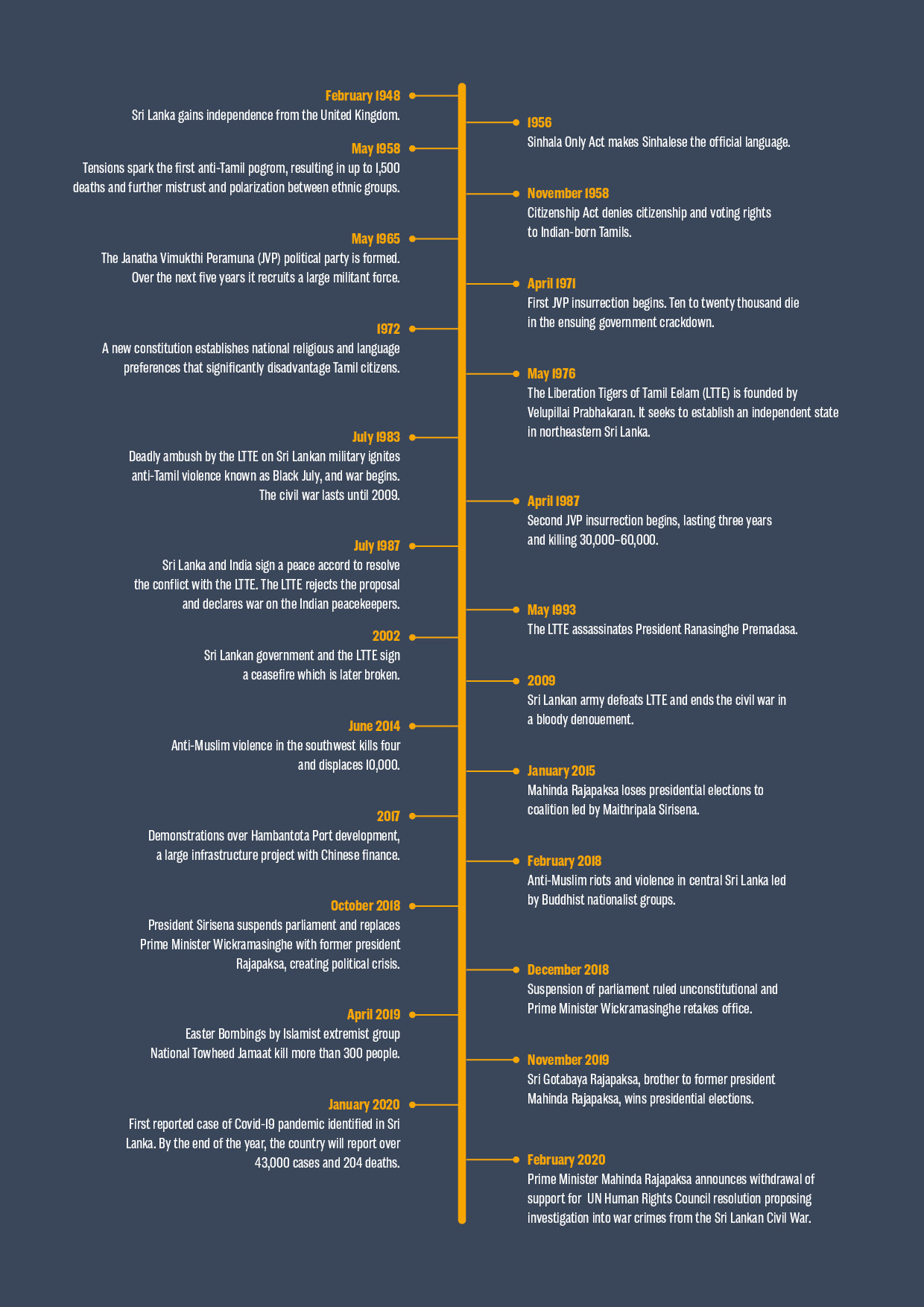The State of Conflict and Violence in Asia 2021
Sri Lanka

Overview
Since the end of the civil war between government forces and the Liberation Tigers of Tamil Eelam (LTTE) in 2009, Sri Lanka has been comparatively peaceful. Yet the legacy of 25 years of bloody conflict and the limited progress made in addressing deep-seated political and social problems continue to generate ongoing tensions and bouts of violence. On Easter morning, 2019, the country was rocked by a series of six coordinated and deadly terrorist attacks by Islamic extremists on Catholic churches and luxury hotels. The attacks followed years of increasingly virulent rhetoric and violent attacks against the country’s minority Muslim population and a long legacy of anti-Muslim chauvinism.
The attacks also occurred against the backdrop of a government in a state of disarray and an erosion of democratic institutions. Political drift and discord eventually led to an attempt by the president to replace the prime minister, which was soon overturned by the Constitutional Court. Elsewhere, land disputes and local resource conflicts persist, especially in rural areas where local political and business interests are closely aligned. Various minority groups feel threatened by belligerent displays of exclusionary nationalism, and many Tamils in the North and East still maintain an uneasy relationship with state authorities.